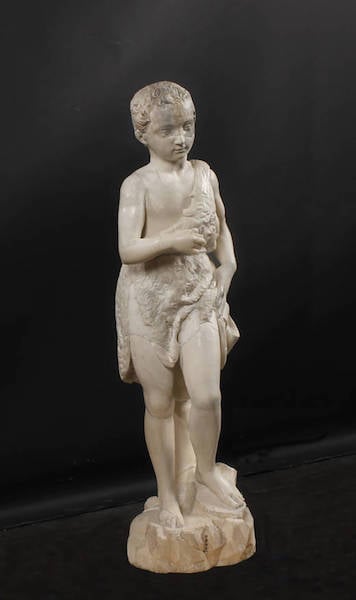Young Saint John the Baptist (1495-96) by Michelangelo sat on view in the Chapel of the Savior of Úbeda, in Andalusia, since it was first put on display in the 16th century. Then came the Spanish Civil War of 1936-1939, in which the sculpture was hammered to pieces and burnt. Thought to be unfixable, the owner of the work, the Ducal House of Medinaceli Foundation, stored the pieces for decades until recent state of the art technology made it possible.

Beginning in 1996, experts at the Opificio delle Pietre Dure in Florence used vintage photographs and written descriptions to create a 3D virtual reconstruction of the sculpture. They then assembled the remains of the piece, secured with the help of a steel structure, and filled the gaps with a blend of fiberglass and nylon. The filling was then sealed with stucco, wax, and varnish and the burnt head given a laser treatment, which cleaned and smoothed its surface. Instead of making the sculpture look new, they choose to leave the cracks as a reminder of war and destruction.
Now, Young Saint John the Baptist (1495-96) is on view once more at the Museo del Prado in Madrid until June 28. After which it will return back to its home, the Chapel of the Savior of Úbeda, in Andalusia where it can rest in peace once more knowing that it has been baptized with a second life.
